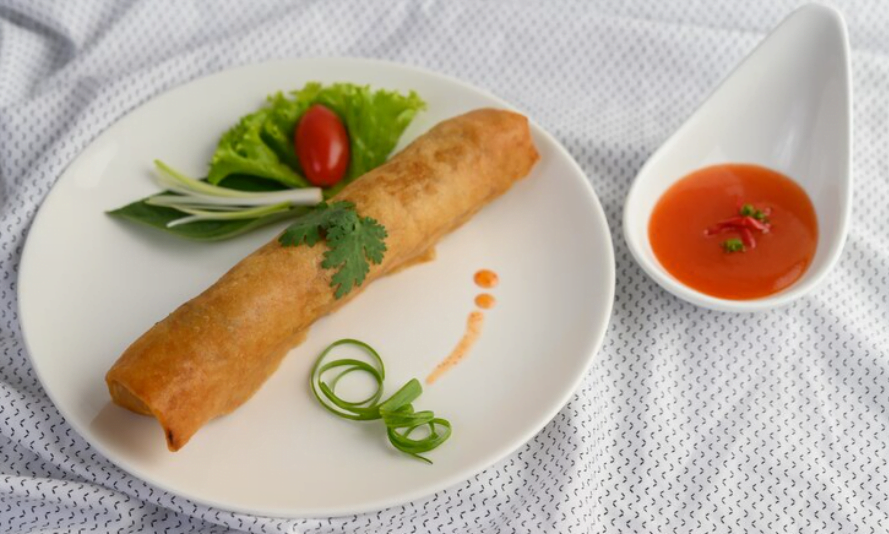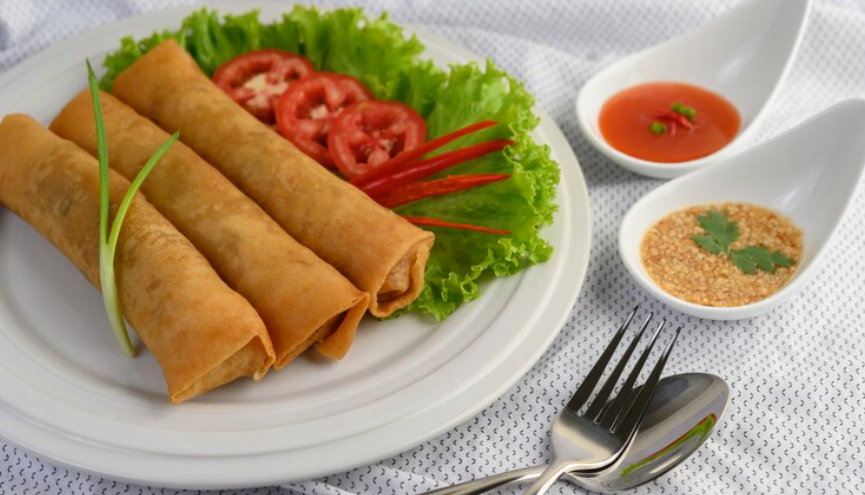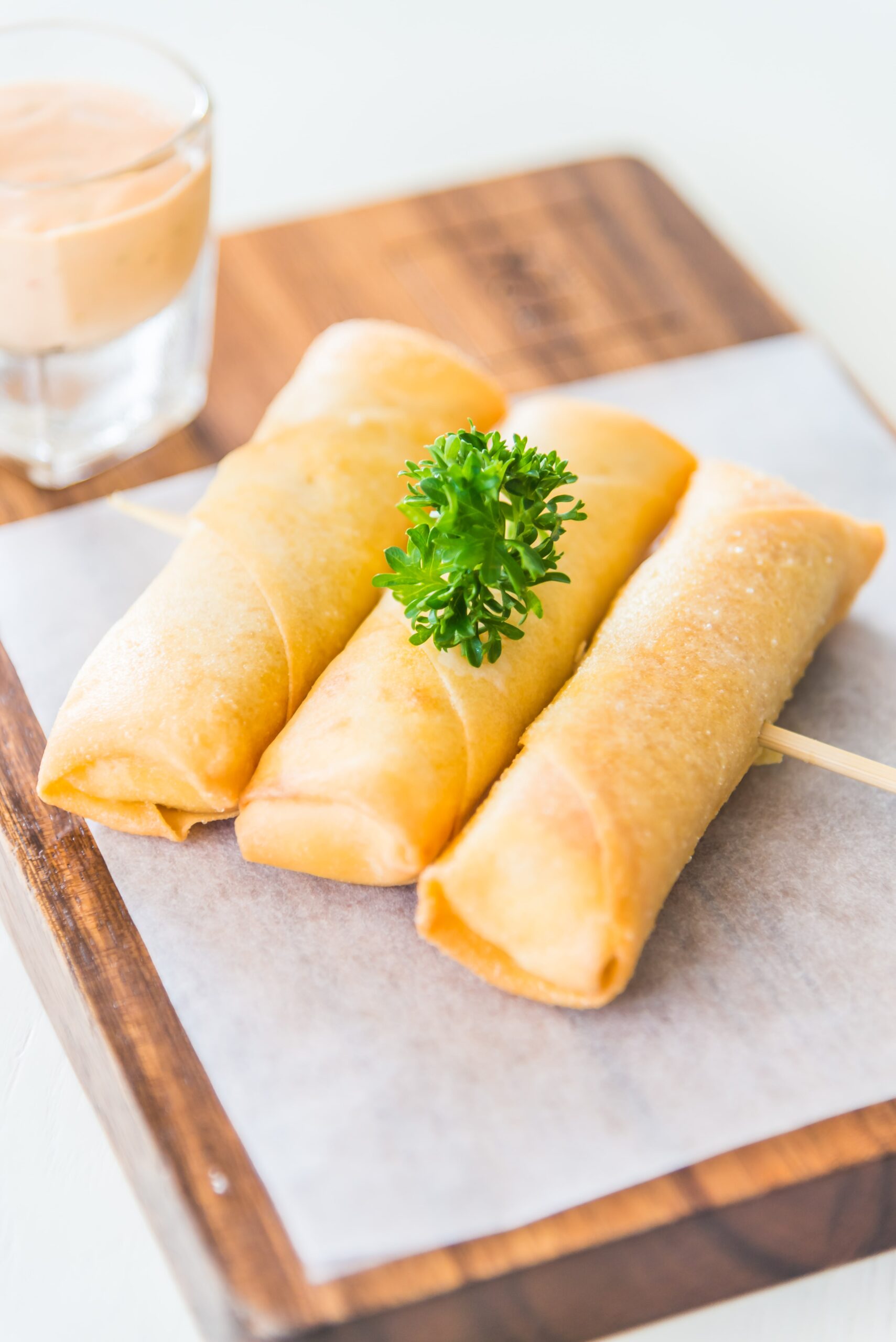Hmong Egg Roll Recipe

The Hmong egg roll recipe is a beloved tradition passed down through generations of Hmong people, an ethnic group originating from the mountainous regions of China, Laos, and Thailand. These crispy, savory, and flavorful rolls have become a staple in Hmong cuisine, often served at special occasions and celebrations. In this article, we will delve into the rich history and cultural significance of Hmong egg rolls, and provide a detailed recipe to make these delicious treats at home.
Also Read: Scramble Burger Recipe
Table of Contents
The History and Cultural Significance of Hmong Egg Rolls
Hmong egg rolls have their roots in Chinese cuisine, where egg rolls have been a popular snack for centuries. However, the Hmong people have adapted and modified the recipe to incorporate their own unique flavors and ingredients, making it a distinct part of their culinary heritage.

In Hmong culture, egg rolls are often served at special occasions such as weddings, holidays, and family gatherings. They are a symbol of unity, prosperity, and good fortune. The process of making egg rolls is often a communal effort, with family members and friends gathering together to prepare the ingredients, assemble the rolls, and fry them to perfection.
The Challenge of Hmong Egg Roll Recipe
The Hmong egg roll recipe poses a challenge to many cooks due to its delicate balance of flavors and textures, requiring a harmonious blend of crunchy vegetables, savory meat, and crispy wrapper. The process of assembling the rolls demands patience and dexterity, as the thin wrappers can tear easily, and the filling must be carefully proportioned to avoid overstuffing. Furthermore, achieving the perfect fry, with a golden-brown crust and a tender interior, can be a trial-and-error process, as the oil temperature and cooking time must be precisely controlled.

Additionally, the Hmong egg roll recipe often relies on traditional ingredients and techniques passed down through generations, making it difficult for newcomers to master the recipe without guidance from an experienced cook. Despite these challenges, the reward of a perfectly cooked Hmong egg roll makes the effort well worth it.

Hmong Egg Roll Recipe
Description
The Hmong Egg Roll Recipe is a crispy and savory Asian-inspired snack or appetizer filled with a delicious mix of vegetables and meat, carefully wrapped in a thin egg roll wrapper and deep-fried to a golden brown perfection. With a delicate balance of flavors and textures, this traditional Hmong dish is a staple at family gatherings and special occasions, and is now easily recreatable at home with this simple and authentic recipe.
Ingredients
Instructions
- Prepare the filling: In a large mixing bowl, combine the mixed vegetables, cooked and shredded meat, garlic, soy sauce, oyster sauce (if using), and sesame oil. Mix well until all the ingredients are well combined.
- Prepare the egg roll wrappers: Thaw the egg roll wrappers according to the package instructions. Cut the wrappers into smaller squares, about 3 inches by 3 inches.
- Assemble the egg rolls: Place a tablespoon of the filling in the center of each wrapper square. Brush the edges with a small amount of water. Fold the wrapper into a triangle by bringing the two opposite corners together to form a point. Press the edges together to seal the roll.
- Fry the egg rolls: Heat about 1-2 inches of vegetable oil in a large skillet or wok over medium-high heat. When the oil is hot, add a few of the egg rolls to the skillet (do not overcrowd). Fry the egg rolls until they are golden brown and crispy, about 3-4 minutes on each side. Drain the egg rolls on paper towels.
- Serve and enjoy: Serve the Hmong egg rolls hot with your favorite dipping sauce. Traditional options include a sweet chili sauce or a peanut sauce.

Notes
- The estimated calorie count per serving for the Hmong Egg Roll Recipe is 210-255 calories, broken down into 50-60 calories from the egg roll wrapper, 40-55 calories from the filling ingredients (vegetables and cooked meat), and 120-140 calories from the frying oil. Please note that this is an estimate and actual calorie counts may vary depending on specific ingredients, portion sizes, and frying methods used. Additionally, baking the egg rolls instead of frying can significantly reduce the calorie count.
Tips and Variations:
- Use a variety of vegetables and meats to suit your taste preferences.
- Add noodles or rice to the filling for added texture and flavor.
- Use different seasonings such as fish sauce or hoisin sauce to give the egg rolls a unique flavor.
- Bake the egg rolls in the oven instead of frying for a healthier option.
Nutritional Information
Here is a breakdown of the estimated calories per serving for the Hmong Egg Roll Recipe:
Components:
- Egg roll wrapper (1 piece): 50-60 calories
- Filling ingredients (approx. 1/4 cup):
- Vegetables (cabbage, carrots, bean sprouts): 10-15 calories
- Cooked meat (chicken or pork): 30-40 calories
- Seasonings (soy sauce, oyster sauce, sesame oil): negligible calories
- Frying oil (approx. 1 tablespoon): 120-140 calories
Total Calories Per Serving: 210-255 calories
Note:
- The calorie count for the filling ingredients is an estimate, as it can vary based on specific ingredients and portion sizes.
- The calorie count for the frying oil is also an estimate, as it can vary depending on the type of oil used and the amount absorbed during frying.
- This calculation assumes a moderate amount of oil is used for frying. If more oil is used, the calorie count will be higher.
Keep in mind that this is an estimate, and actual calorie counts may vary. If you’re concerned about calorie intake, consider baking the egg rolls instead of frying for a significantly reduced calorie count.
Frequently Asked Questions (FAQ)
What is the best type of meat to use for the filling?
Traditionally, pork or chicken is used, but you can also use beef, tofu, or a combination of meats.
Can I use frozen vegetables instead of fresh ones?
Yes, frozen vegetables can be used, but make sure to thaw and drain them before using.
How do I prevent the egg roll wrappers from tearing?
Make sure to handle the wrappers gently, and if they tear, you can use a small amount of water to “glue” them back together.
Can I bake the egg rolls instead of frying them?
Yes, baking is a healthier alternative, but the egg rolls may not be as crispy.
How do I store leftover egg rolls?
Let them cool completely, then store them in an airtight container in the refrigerator for up to 3 days or freeze for up to 2 months.
Can I make the filling ahead of time?
Yes, the filling can be made ahead of time and stored in the refrigerator for up to a day.
How do I serve the egg rolls?
Serve hot with your favorite dipping sauce, such as sweet chili sauce or peanut sauce.
Conclusion
The Hmong egg roll recipe is a delicious and meaningful tradition that brings people together. With its crispy exterior and savory filling, it’s no wonder why it’s a staple in Hmong cuisine. By following this recipe and tips, you can create your own delicious Hmong egg rolls at home and share them with your loved ones. So go ahead, gather your family and friends, and start rolling!
